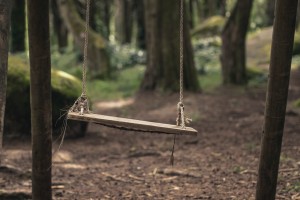
Stats show no change in child poverty
There has been no real improvement to the proportion of our tamariki living in poverty according to the recently released 2021/22 Child Poverty Statistics for Aotearoa.
About one in 10 children experience material hardship where their households cannot afford things like regular healthy food, doctors’ visits or to pay their power bills on time, according to the StatsNZ data.
The picture for Māori and Pasifika is much worse, according to the data, with one in five Māori children and one in four Pasifika children experiencing material hardship.
Infographic courtesy of PHANZ
Health Promotion Forum of NZ’s Executive Director Sione Tu’itahi said poverty was inextricably linked to poor health, and these statistics exposed the harsh reality that many of our tamariki would have a higher risk of poor health.
Mr Tu’itahi said from a health promotion perspective, sad stories in grim statistics such as this, confirmed several seriously concerning factors.
“First, the huge injustice in our current socio-economic and political systems, is reflected in how we distribute our collective wealth,” said Mr Tu’itahi.
“This inequity also exposes the inadequacy of our current thinking and core values that inform our public policies, which divide us to a powerful few of haves and a majority of have-nots. This is a recipe for more social instability.
Second, and more concerning, said Mr Tu’itahi was those global challenges such as environmental calamities, economic crises, geo-political conflicts, and pandemics affected all nations.
“These will continue to accelerate with greater damages, unless we elevate our thinking and re-set our values and principles to inform our policies and actions at the institutional, community and individual levels.
‘As the World Health Organisation’s Geneva Charter for Well-being states: ‘Responses require investments that integrate planetary, societal, community and individual health and well-being, as well as changes in social structures to support people to take control of their lives and health. Fundamental redirection of societal values and action consistent with the 2030 Agenda for Sustainable Development are required.”
Prof Emeritus and Child Poverty Action Group health spokesperson Innes Asher said this was an appalling situation.
“The future is bleak for these children who are languishing in poverty. The country’s future is also blighted by this because we’re not investing in children," he said.
Stats NZ general manager social and population insights Sean Broughton said when a household is in material hardship, it can mean going without things like fresh fruit and veggies or avoiding using the heater in winter to save money.
"These households are particularly vulnerable to unforeseen expenses, which they’re unlikely to be able to pay without borrowing, be it from friends and whānau or from the bank.”
Most vulnerable not included
Source: StatsNZ
The Child Poverty Action Group also pointed out that of the almost 9000 households surveyed in this data, there was no inclusion of our most vulnerable families.
“Families living in motels and other emergency accommodation, as well as cars and other forms of homelessness were not included," said Prof Asher.
"The real picture is likely to be a lot more grim, as anecdotal evidence suggests the numbers of families in these dire situations is on the increase.
"We also know poverty is a driver of preventable hospitalisations, which is another reason to urgently address child poverty, for the sake of our overburdened health system," he added.
Auckland Action Against Poverty co-chair and media spokesperson Agnes Magele said the number of children still experiencing poverty was so unnecessary given how rich of a country we are.
CPAG convenor and housing spokesperson Alan Johnson pointed out that radical changes to tax and welfare were needed.
CPAG has called on the Government to fully adopt the 42 recommendations of the government-appointed Welfare Expert Advisory Group’s February 2019 report. So, far not one of the recommendations had been fully implemented in the four years since the group's report was published.
Children with disabilities
Also concerning was the rate of children with disabilities - one in five - who were living in material hardship.
There was no data around the number of disabled children who are Māori, and CPAG is concerned about that cohort with a double-risk factor and is calling on the Government to start including this cohort in its data.
"We know that any household with a disabled family member is more at risk of living in hardship," said Mr Johnson.
The Children’s Commissioner, Judge Frances Eivers, said: “Mokopuna Māori are more than two times likely than Pākehā children to be living with material hardship, and Pacific children are more than three times likely in material hardship than Pākehā children."
“One in five disabled children (20.5%) live in households experiencing material hardship, which is more than double the rate for non-disabled children (9.7%).
“I strongly believe the answers lie in agencies working more closely with whānau, hapū and iwi, community leaders, and NGOs. These groups are trusted by Māori and Pacific communities that simply do not trust government agencies, and as a result either don’t reach out for help, or aren’t comfortably sharing fully details of their true situation. Every community knows who needs assistance and how best to deliver that.’
Data concerns
Meanwhile, Stats NZ did not produce regional breakdowns, and warned there was "greater uncertainty on statistics for demographic groups than previous years".
There are concerns with the 2021/22 data, given that the usual sample size is 20,000, and the reduced target sample was 10,000, but only 8900 households were surveyed.
StatsNZ has provided analysis of data quality deeming it to be publishable, though caution is still advised when interpreting the results, particularly with sub-group analyses hence regional data was not shown.
(Banner photo by Manuel Inglez on Unsplash)